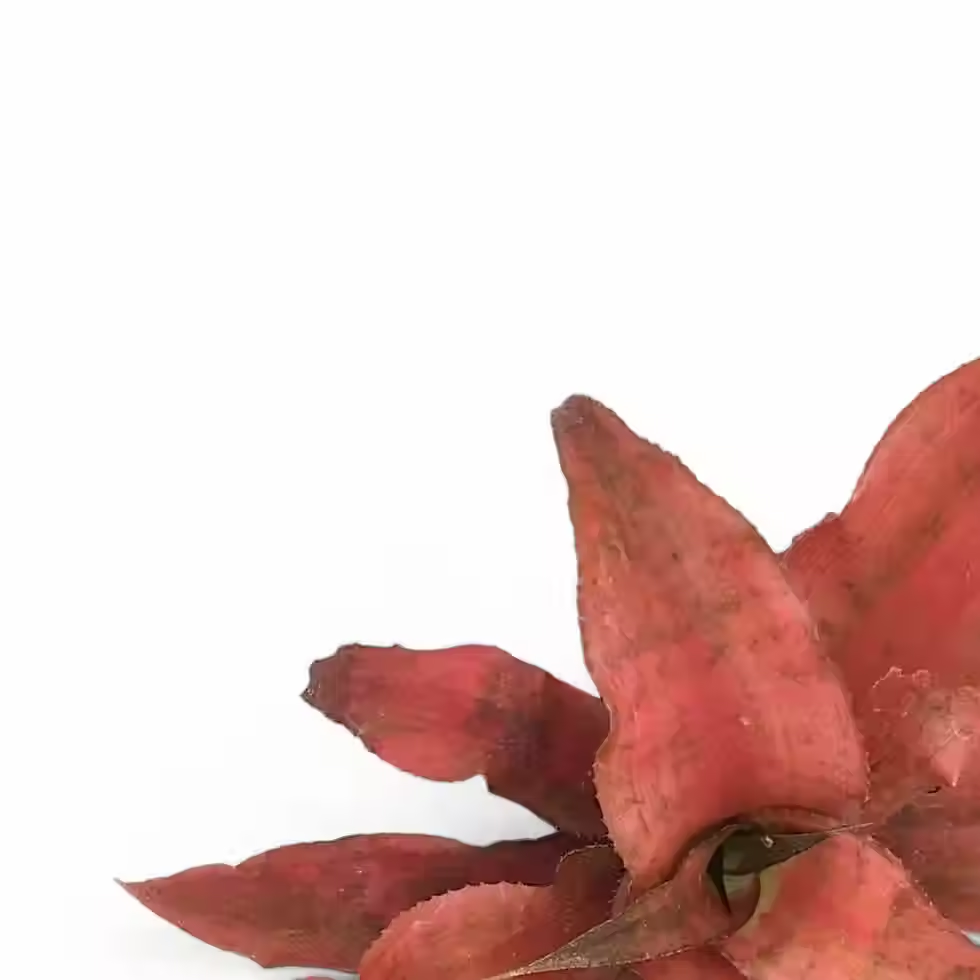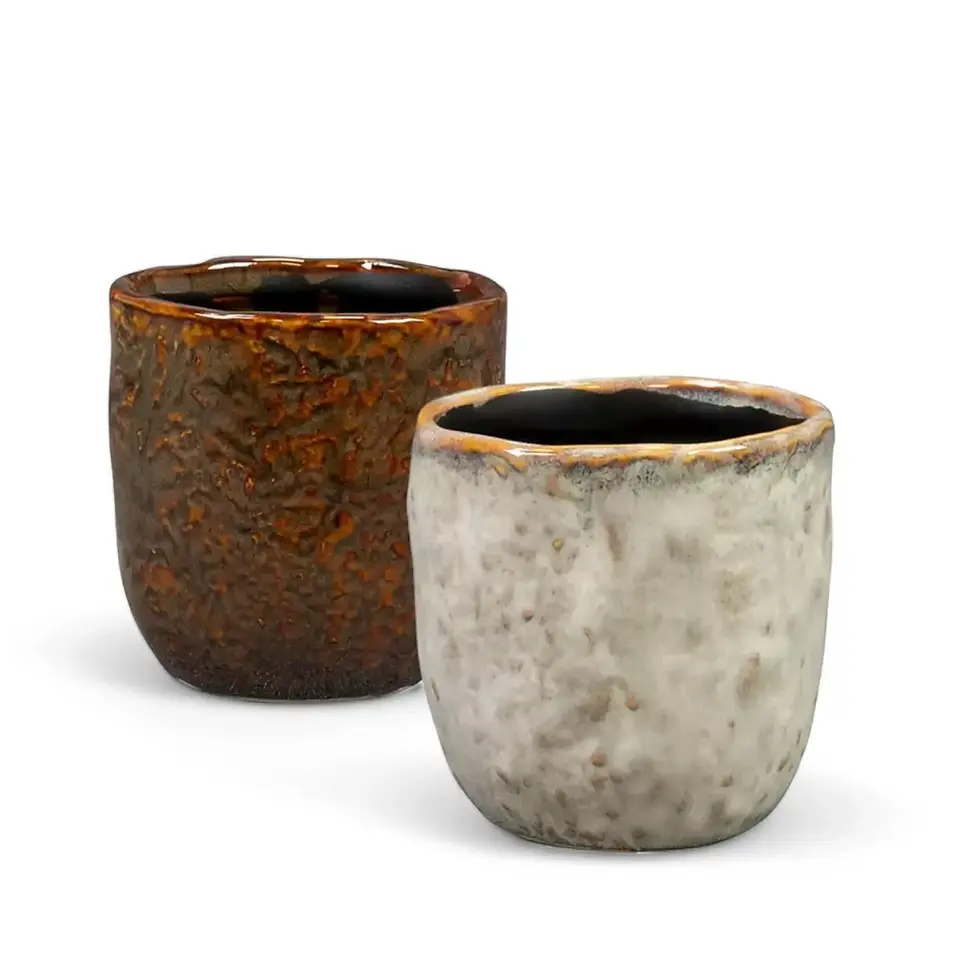Alocasia nebula 'Silver' ('Black Diamond') - Care Guide and Growing Tips
Alocasia nebula 'Silver', also known as 'Black Diamond', is a rare and highly sought-after houseplant admired for its stunning foliage and unique aesthetic. This cultivar features thick, bullate leaves with a mesmerizing smoky silver tone, contrasted by deep, dark veins. The undersides of the leaves boast a rich reddish-purple hue, adding even more visual depth. Its compact size and resilient nature make it a perfect statement plant for collectors and houseplant enthusiasts.
Key Features and Benefits of Alocasia nebula 'Silver'
- Distinctive Foliage: Thick, textured leaves with a metallic silver sheen and deep, prominent veins.
- Compact Growth: Reaches about 30 cm in height, ideal for small spaces.
- Growth Rate: Slow to moderate grower, with new leaves emerging gradually.
- Dramatic Contrast: Undersides display a bold reddish-purple hue.
- Rare Collector’s Plant: Highly desirable due to its exceptional appearance and limited availability.
- Tropical Elegance: Brings an exotic rainforest aesthetic to indoor spaces.
- Durability: Thick, leathery leaves resist damage and stay vibrant with proper care.
What You Need to Know about Alocasia nebula 'Silver'
Native to the tropical rainforests of Borneo, particularly Sarawak, Alocasia nebula thrives in warm, humid environments. It is believed to grow on limestone substrates in consistently humid conditions. The region experiences an average annual rainfall of approximately 1,200 mm, with temperatures ranging from 9°C to 31°C. Indoors, this plant remains compact, reaching around 20-30 cm in height.
Toxicity Warning: Like all Alocasia species, this plant contains calcium oxalate crystals, which can be toxic to pets and humans if ingested. Always wash hands after handling.
Alocasia nebula 'Silver' Care Guide
- Placement: Choose a warm, humid location away from direct drafts and air conditioning vents.
- Light Requirements: Prefers bright, indirect light. Avoid direct sun to prevent leaf scorch. Grow lights can supplement natural light if necessary.
- Watering: Maintain evenly moist soil, but avoid waterlogging. Allow the top layer to dry slightly between waterings.
- Humidity: Requires 60-80% humidity. Use a humidifier, place near other tropical plants, or use a humidity tray.
- Temperature: Ideal range is 18°C to 27°C. Avoid prolonged exposure below 15°C, which may lead to dormancy.
- Soil: Use a well-draining, organic-rich mix with bark, perlite, and charcoal. Adding crushed dolomite can benefit plants adapted to limestone-rich substrates.
- Repotting and Pot Choice: Repot every two years or when the plant outgrows its pot. Use a container with adequate drainage.
- Fertilization: Feed with a balanced liquid fertilizer once a month. Use a diluted fertilizer to support steady growth without leaf burn.
- Propagation: Propagate via division or corms. Corms may take time to sprout but can be encouraged with high humidity.
- Semi- and Hydroponics: Can adapt to semi-hydroponic setups using inert substrates and self-watering pots.
- Pruning: Trim off damaged or yellowing leaves to encourage healthy growth.
- Pest Prevention: Inspect regularly for pests and wipe down leaves to deter infestations.
Alocasia nebula 'Silver' - Common Issues and Solutions
- Yellowing Leaves: Usually caused by overwatering or poor drainage. Ensure well-draining soil and adjust watering habits.
- Browning Leaf Tips: Often due to low humidity or inconsistent watering. Increase humidity and water consistently.
- Drooping Leaves: May indicate underwatering, sudden temperature changes, or root issues. Check moisture levels and root health.
- Pests: Susceptible to spider mites, mealybugs, thrips, and fungus gnats. Treat with insecticidal soap , neem oil, or use beneficial insects.
- Root Rot: Prevent by using an airy soil mix and allowing slight drying between waterings.
- Fungal Issues: Ensure good air circulation to prevent leaf spot and fungal infections. Treat with a mild fungicide if necessary.
- Edema: Overwatering can cause water retention in the leaves. Reduce watering frequency and improve drainage.
- Leaf Curling: Often a sign of excessive direct sunlight or dehydration. Adjust light exposure and check soil moisture.
- Stunted Growth: Caused by inadequate light or nutrients. Ensure bright, indirect light and fertilize appropriately.
Alocasia nebula 'Silver' - Additional Tips for Success
Alocasia nebula 'Silver' can develop aerial roots and benefits from a stable support system if grown in larger pots. This plant produces corms, which can be used for propagation, though they may have a prolonged dormancy period before sprouting. Rotating the plant occasionally helps promote even growth. Mimicking its natural conditions will ensure optimal health and vibrant foliage.
Etymology and Botanical Background
The name Alocasia nebula comes from the Latin word “nebula,” meaning mist or vapor, alluding to its uncertain origins and the soft silver variegation on its leaves. Described by botanist Alistair Hay in 1999, it is believed to originate from limestone-rich forests in Sarawak, Borneo. Its closest relative, Alocasia scabriuscula, differs in its larger leaves and distinct vein structure.
FAQs About Alocasia nebula 'Silver'
- How fast does Alocasia nebula 'Silver' grow? It has a moderate growth rate and typically produces a few new leaves per year under ideal conditions.
- Can Alocasia nebula 'Silver' tolerate low light? It prefers bright, indirect light. While it can survive in lower light conditions, growth will slow significantly.
- What is the best potting mix for Alocasia nebula 'Silver'? A well-draining, organic-rich mix with bark, perlite, and charcoal is ideal for supporting healthy roots.
Order Your Alocasia nebula 'Silver' Today
This rare and exotic Alocasia variety is a must-have for plant collectors. Secure yours today and bring the beauty of the rainforest into your home!
Alocasia nebula 'Silver' ('Black Diamond')
Alocasia nebula 'Silver' ('Black Diamond') comes in following sizes:
Baby Plant – is approximately 12 cm tall and comes in a ⌀ 6 cm pot
S – is approximately 15 cm tall and comes in a ⌀ 10.5 cm pot
M – is approximately 25 cm tall and comes in a ⌀ 12 cm pot

























































